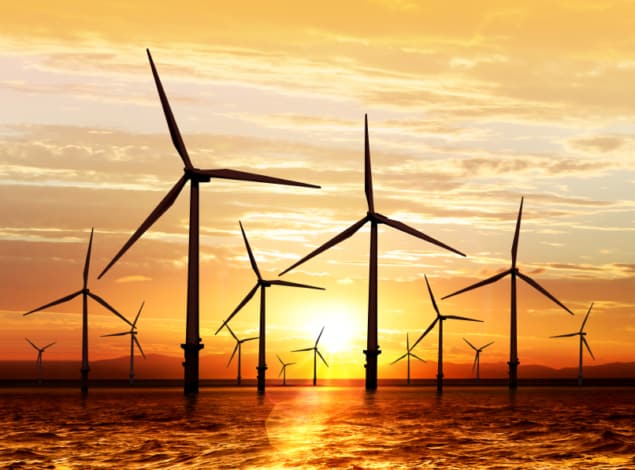
Back in 2016 the US installed its first offshore wind farm: Block Island Wind Farm, off the coast of Rhode Island. Many more projects are underway and the US government plans to produce 86 GW – enough energy to power around 60 million homes – from offshore wind by 2050. But how will these new wind farms affect US seabird populations? A new study shows careful placement can help minimize the exposure of foraging birds that may be vulnerable to widespread development.
Offshore wind farms are already commonplace in Europe, particularly in the North Sea where there are over 80, producing more than 18 MW. Research from Europe has shown that offshore wind farms can affect seabirds, both directly – when birds collide with turbines – and indirectly, when birds lose habitat as a result of their tendency to avoid wind farm areas. When multiple offshore wind farms are installed, there are concerns that there may be cumulative effects on seabirds.
Wing Goodale from the University of Massachusetts at Amherst and Biodiversity Research Institute, US, and colleagues wondered if the cumulative impact on seabirds could be reduced by careful design of the spatial arrangement of offshore wind farms. To investigate, they modelled the exposure of seven foraging seabird guilds – groups of birds that rely on the same set of resources – under three different wind farm siting scenarios along the US east coast.
Their findings show that cumulative effects are more likely for coastal birds than pelagic birds, which spend most of their time on the ocean and away from land.
“Coastal bottom gleaners, such as sea ducks, and coastal divers, such as loons, are vulnerable to displacement, whilst coastal surface gleaners such as gulls are vulnerable to collision,” says Goodale. Pelagic birds like puffins, razorbills, fulmars and shearwaters are less vulnerable because their habitat is less disturbed.
The results, which are published in Environmental Research Letters (ERL), show that some birds will be exposed wherever the wind farms are placed. Gulls will be exposed the most in near-shore and shallow water locations, whilst pelagic birds will be exposed the most in high wind areas, which tend to be further out to sea.
Proposed wind energy areas already avoid known bird hotspots such as the Nantucket Shoals and aim to disperse developments along most of the east coast, from South Carolina to Massachusetts. The new findings suggest that the detailed siting of the wind farms is important too.
“We recommend that when two or more wind farms are sited in one wind energy area they should, to the extent practicable, be separated as much as possible, to provide movement corridors for species vulnerable to displacement,” says Goodale.
Spreading out developments even further may help to minimize adverse impacts on seabirds. Goodale and colleagues suggest that future siting should focus on areas with no current leases, such as the Gulf of Maine.



